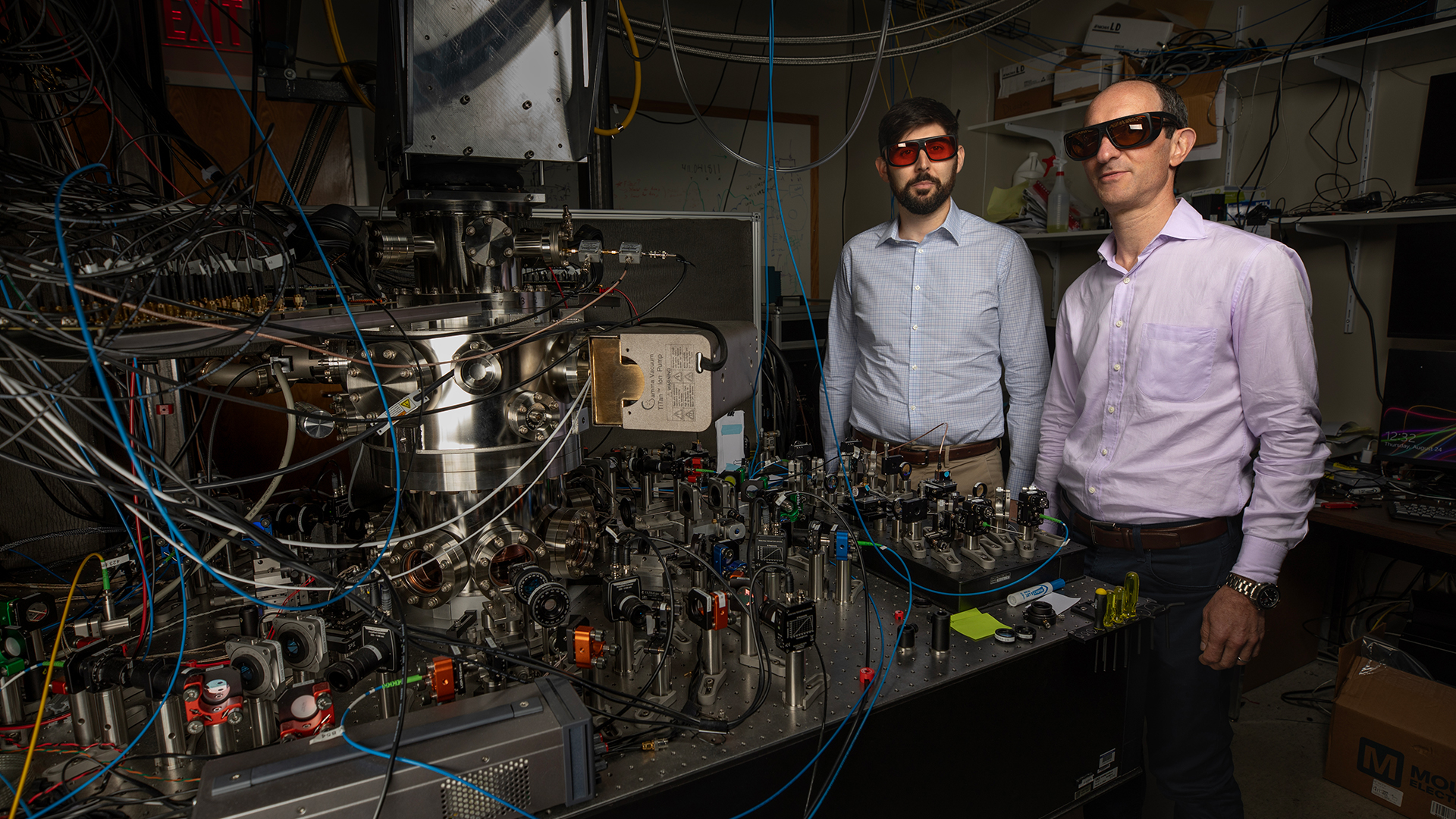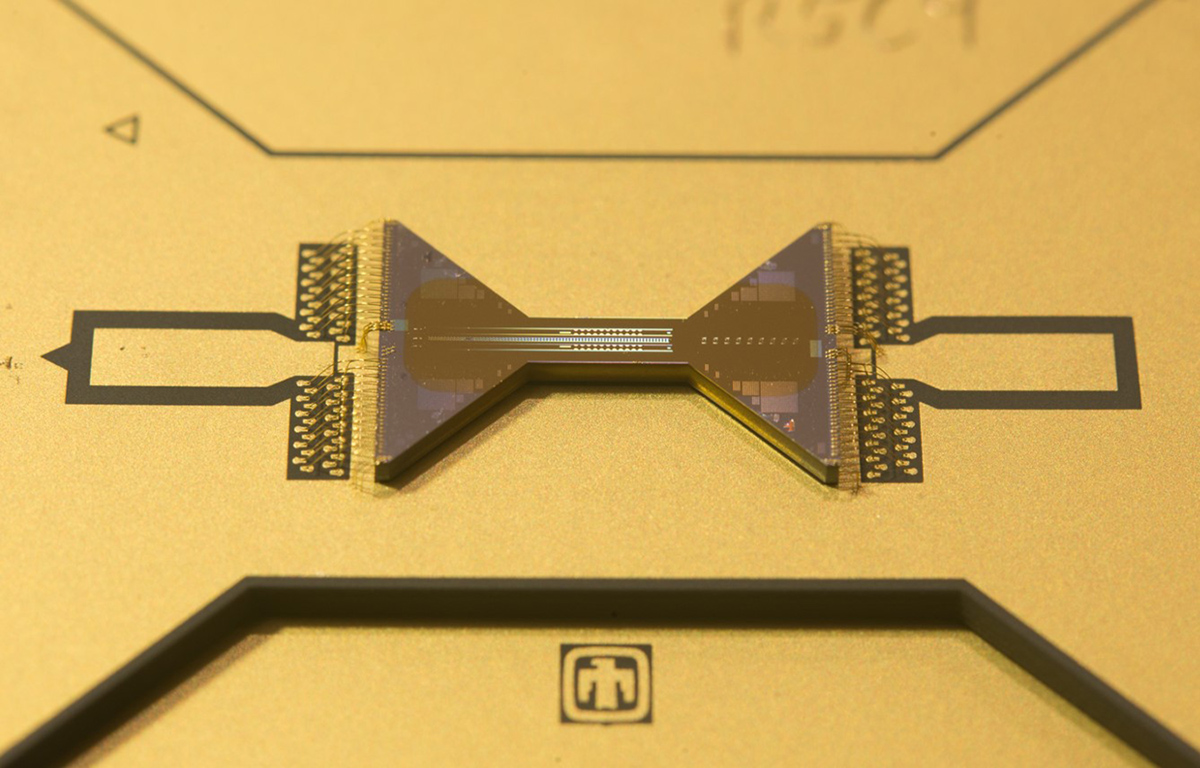New Ion Cooling Technique Could Simplify Quantum Computing Devices
A new cooling technique that utilizes a single species of trapped ion for both computing and cooling could simplify the use of quantum charge-coupled devices (QCCDs), potentially moving quantum computing closer to practical applications.
Using a technique called rapid ion exchange cooling, scientists at the Georgia Tech Research Institute (GTRI) have shown that they could cool a calcium ion – which gains vibrational energy while doing quantum computations – by moving a cold ion of the same species into close proximity. After transferring energy from the hot ion to the cold one, the refrigerant ion is returned to a nearby reservoir to be cooled for further use.
Conventional ion cooling for QCCDs involves the use of two different ion species, with cooling ions coupled to lasers of a different wavelength that do not affect the ions used for quantum computing. Beyond the lasers needed to control the quantum computing operations, this sympathetic cooling technique requires additional lasers to trap and control the refrigerant ions, and that both increases complexity and slows quantum computing operations.
“We have shown a new method for cooling ions faster and more simply in this promising QCCD architecture,” said Spencer Fallek, a GTRI research scientist. “Rapid exchange cooling can be faster because transporting the cooling ions requires less time than laser cooling two different species. And it’s simpler because using two different species requires operating and controlling more lasers.”
The ion movement takes place in a trap maintained by precisely controlling voltages that create an electrical potential between gold contacts. But moving a cold atom from one part of the trap is a bit like moving a bowl with a marble sitting in the bottom. When the bowl stops moving, the marble must become stationary – not rolling around in the bowl, explained Kenton Brown, a GTRI principal research scientist who has worked on quantum computing issues for more than 15 years.
“That’s basically what we’re always trying to do with these ions when we’re moving the confining potential, which is like the bowl, from one place to another in the trap,” he said. “When we’re done moving the confining potential to the final location in the trap, we don’t want the ion moving around inside the potential.”
Once the hot ion and cold ion are close to each other, a simple energy swap takes place and the original cold ion – heated now by its interaction with a computing ion – can be split off and returned to a nearby reservoir of cooled ions. The GTRI researchers have so far demonstrated a two-ion proof-of-concept system, but say their technique is applicable to the use of multiple computing and cooling ions, and other ion species.
A single energy exchange removed more than 96 percent of the heat (measured as 102(5) quanta) from the computing ion, which came as a pleasant surprise to Brown, who had expected multiple interactions might be necessary. The researchers tested the energy exchange by varying the starting temperature of the computational ions and found that the technique is effective regardless of the initial temperature. They have also demonstrated that the energy exchange operation can be done multiple times.
Heat – essentially vibrational energy – seeps into the trapped ion system through both computational activity and from anomalous heating, such as unavoidable radio-frequency noise in the ion trap itself. Because the computing ion is absorbing heat from these sources even as it is being cooled, removing more than 96 percent of the energy will require more improvements, Brown said.

The researchers envision that in an operating system, cooled atoms would be available in a reservoir off to the side of the QCCD operations and maintained at a steady temperature. The computing ions cannot be directly laser-cooled because doing so would erase the quantum data they hold.
Excessive heat in a QCCD system adversely affects the fidelity of the quantum gates, introducing errors in the system. The GTRI researchers have not yet built a QCCD that uses their cooling technique, though that is a future step in the research. Other work ahead includes accelerating the cooling process and studying its effectiveness at cooling motion along other spatial directions.
The experimental component of the rapid exchange cooling experiment was guided by simulations done to predict, among other factors, the pathways that the ions would take in their journey within the ion trap. “We definitely understood what we were looking for and how we should go about achieving it based on the theory and simulations we had,” Brown said.

The unique ion trap was fabricated by collaborators at Sandia National Laboratories. The GTRI researchers used computer-controlled voltage generation cards able to produce specific waveforms in the trap, which has a total of 154 electrodes, of which the experiment used 48. The experiments took place in a cryostat maintained at about 4 degrees Kelvin.
GTRI’s Quantum Systems Division (QSD) investigates quantum computing systems based on individual trapped atomic ions and novel quantum sensor devices based on atomic systems. GTRI researchers have designed, fabricated, and demonstrated a number of ion traps and state-of-the-art components to support integrated quantum information systems. Among the technologies developed is the ability to precisely transport ions to where they are needed.
“We have very fine control of how the ions move, the speed at which they can be brought together, the potential they’re in when they are near one another, and the timing that’s necessary to do experiments like this,” said Fallek.
Other GTRI researchers involved in the project included Craig Clark, Holly Tinkey, John Gray, Ryan McGill and Vikram Sandhu. The research was done in collaboration with Los Alamos National Laboratory, and a paper describing it was published February 5, 2024 in the journal Nature Communications.
Writer: John Toon (john.toon@gtri.gatech.edu)
GTRI Communications
Georgia Tech Research Institute
Atlanta, Georgia USA
The Georgia Tech Research Institute (GTRI) is the nonprofit, applied research division of the Georgia Institute of Technology (Georgia Tech). Founded in 1934 as the Engineering Experiment Station, GTRI has grown to more than 2,900 employees, supporting eight laboratories in over 20 locations around the country and performing more than $940 million of problem-solving research annually for government and industry. GTRI's renowned researchers combine science, engineering, economics, policy, and technical expertise to solve complex problems for the U.S. federal government, state, and industry.